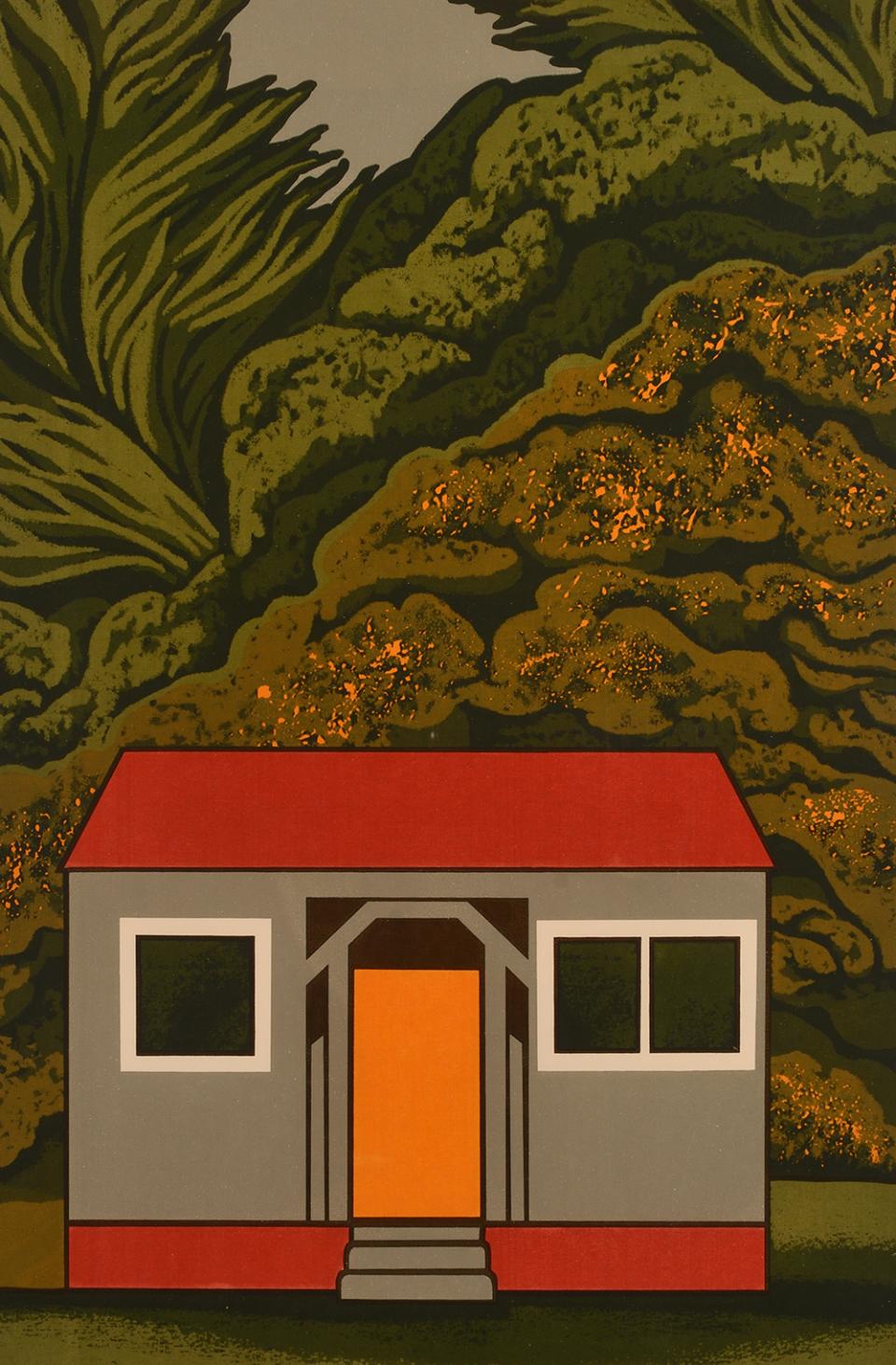In February 1969, 22-year-old Robin White moved to Paremata, north of Wellington, to take up a teaching position at Mana College. Her friend, the poet Sam Hunt, lived on Paremata Inlet at a place he dubbed ‘Bottle Creek’, due to the sherry bottles that tended to accumulate there. He helped find Robin White a bach to rent on the steep macrocarpa-lined track behind his cottage, and for the next three years they saw each other constantly, sustaining a mutually supportive friendship and a lively conversation about art and literature.
For White, the years at Paremata were a period of intense development, when she established a daily routine of painting and refined her printmaking technique. In Sam’s Place, Bottle Creek, she contrasts the geometric form of the cottage, crisply outlined in black, with the turbulence of the windswept trees beyond. The image has a subtle asymmetry: the cottage set slightly off-centre, its façade broken by a pair of mismatched, darkened windows. A glowing orange door acts like a beacon, drawing us into the picture, and leading our eye up through the trees to the sky above. Sam’s Place, Bottle Creek is a classic example of White’s early style – a taut, rhythmic image, and a powerful evocation of place.
Jill Trevelyan, from the publication: 50/fifty – Fifty Years of Aratoi (2019)
